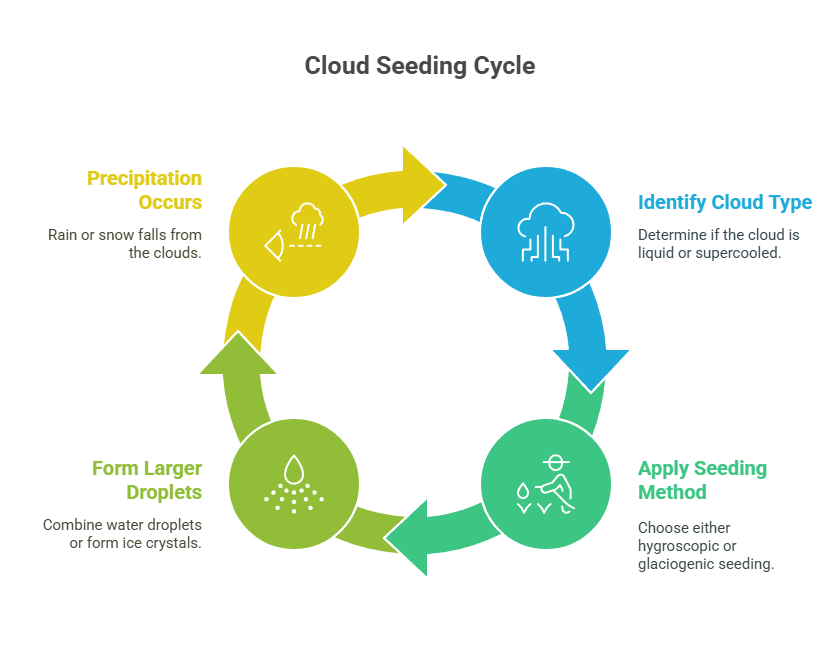30-Jun-2025
Cloud Seeding
Science & Technology
Why in News?
Delhi is set to implement artificial rain through cloud seeding for the first time from July 4–11 to combat air pollution.
Artificial Rain: An Overview
- Artificial rain involves cloud seeding, a weather modification technique used to induce rainfall.
- It is mainly used to increase precipitation, fight drought, and reduce air pollution.
- Indian Institute of Technology, Kanpur, has been assigned to implement the project.
How Cloud Seeding Works
- Chemicals like silver iodide, potassium iodide and dry ice are released into clouds via aircraft or helicopters.
- These substances act as nuclei, allowing water vapor to condense into droplets large enough to fall as rain.
- Success depends on adequate moisture and favorable atmospheric conditions.
Preparing Through MCQ
Q. Which chemicals are commonly used in the cloud seeding process to induce artificial rain?
(1) Sodium chloride and carbon dioxide
(2) Silver iodide, potassium iodide and dry ice
(3) Calcium carbonate and ozone
(4) Sulphur dioxide and methane
Answer: (2) Silver iodide, potassium iodide and dry ice

